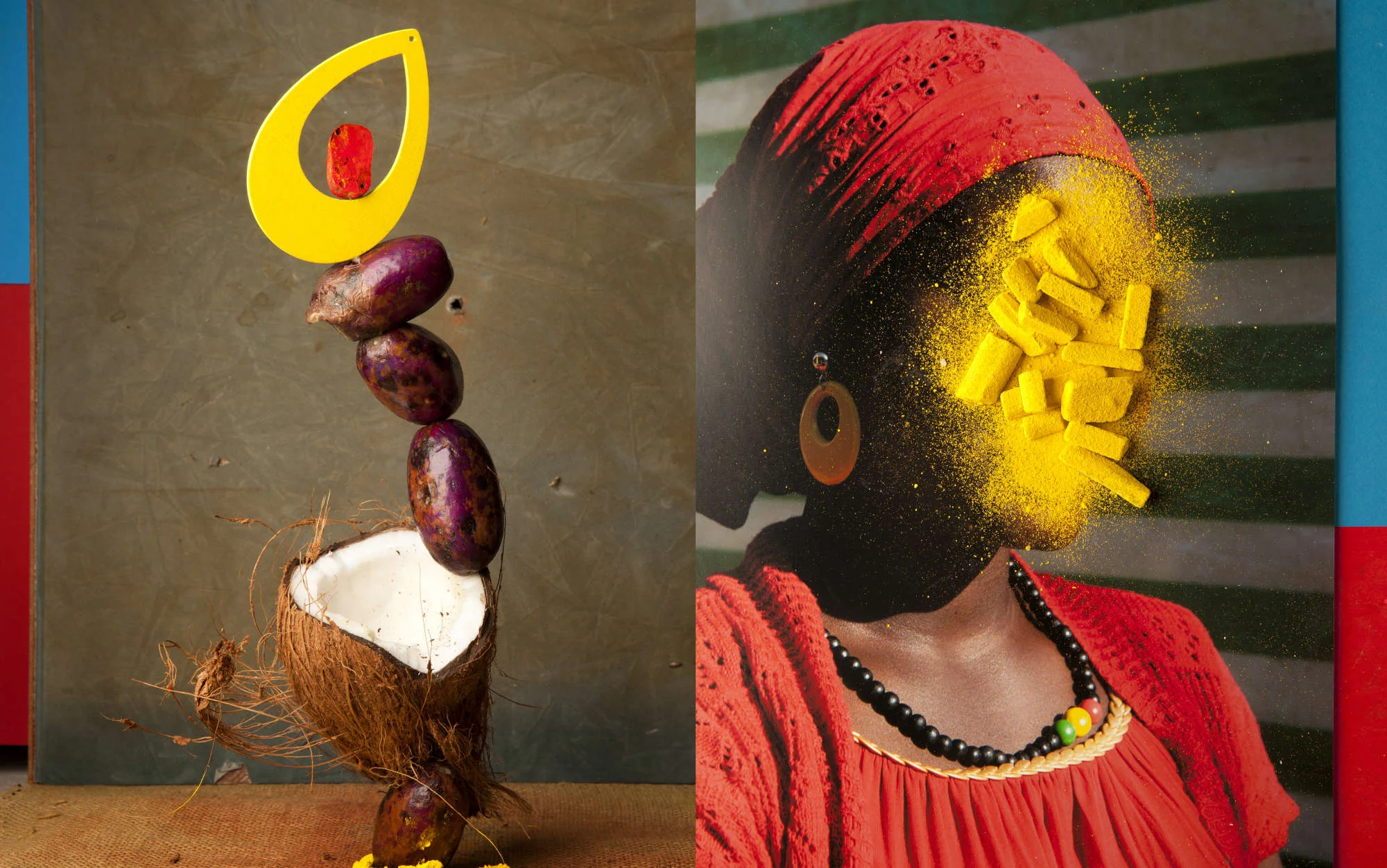Curators Ekow Eshun and Darrell Vydelingum give Nataal a tour of their Somerset House exhibition celebrating immigration in Britain
At a time when the UK headlines are filled with divisive rhetoric around Brexit and xenophobic calls to “Make Britain Great again”, Kaleidoscope: Immigration and Modern Britain is the positive salve we all need. The newly opened exhibition at London’s Somerset House brings together 10 contemporary photographers, including Nataal contributors Liz Johnson Artur and Lorenzo Vitturi, all with family origins outside the UK. Together their diverse, personal and poetic works investigate the immigrant experience on these shores.
“The question we want to ask is, what does it feel like to look at Britain today through the eyes of an immigrant, without being caught in the tropes of reportage and without talking about immigration as a problem,” explains writer Ekow Eshun, who co-curated the show with creative director Darrell Vydelingum. “What does it feel like to talk about immigration as a sensibility, as a way of being, as a cultural memory, as a familial story?” Eshun continues. “Some politicians like to talk about multiculturalism as a failed ethos. I would say the opposite is true. Britain is richer, more open and more of a place of possibility because of and not despite immigration and this exhibition points to how we can think about the country we all live in with an expanded framework.”
Vydelingum is spearheading a participatory programme throughout the summer to compliment Kaleidoscope, which will further cement its inclusive spirit. “Our exhibition is really about celebration - of the artists, their work and their subject matter,” he says. “Immigration has become a dirty word in the past few years but here we embrace all the communities who live in Britain and make it their home. I just hope we’re not still talking about this in ten years time. I hope that with this show, we’re proving that things are changing for the next generation so that the conversation no longer needs to be about the colour of their skin but about what they can bring to the table.”
Here Eshun tours Nataal through five of the many highlights of Kaleidoscope.
Rhianne Clarke – Many Rivers to Cross
“After Rhianne’s father died in 2014, she found many rolls of undeveloped film that he’d taken. He was not a photographer but she describes this as a retrospective project that she created with him. She developed over 400 negatives, edited them and they arrived as a poignant reflection of his experience as a member of an immigrant Caribbean family in the 1970s and 1980s. They are a beautiful set of images that tell this story about black life in London. They are about her, her father's relation to his community and to his working life.”
Mahtab Hussain - The Quiet Town of Tipton (2013-15)
“This series is about a town in the Midlands that’s experienced a lot of immigration from south India since the 1960s. There was a nail bomb attack here in 2013 targeting the Kanzul Iman mosque. Luckily the bomb malfunctioned and didn’t go off. In the same town an elderly Asian man was killed. These attacks were traced back to one person who was jailed. Mahtab’s portraits are of a community that has lived through these waves of arrival and hostility and projections of fear. They are very flat portraits taken against plain backgrounds that express his direct connection to these Asian Muslim families. The point is, they are not alien, not other; they are present and here.”
Chris Steele-Perkins – The New Londoners
“Chris is a Magnum photographer whose on-going project is to shoot one family from every nation in the world, all of whom are based in London. He’s done around 160 families so far and the UN recognises almost 200 nations. The series makes a clear point about what London looks like and what immigration looks like. The compositions are all amazing and work in a classical way but he’s still found a way for each of these families to live in their own spaces on their own terms.”
Seba Kurtis – Heartbeat (2012)
“Seba is an Argentinian photographer who lived as an illegal immigrant in Spain for a number of years. This series looks at the way the UK Border Agency uses heartbeat monitors to scan trucks for asylum seekers when they arrive in the UK. Apparently they are so sensitive they can detect a mouse’s heartbeat. He’s replicated that process in these images in that visually you can see a faint outline of the figures with the visual noise more apparent in some than others. All of the people in the images have been held in detention centres, which means that they are figures who are struggling to be visible in a system that denies them that.”
Teresa Eng – Elephant (2018)
“These photographs were all shot in Elephant & Castle, which is Teresa’s home borough in London, and are portraits of second and third generation residents. The images have real empathy and I love the colour and lighting that she’s brought to all of her subjects. The series really speaks to immigration as a lived experience and its contribution to what and who Britain is now.”
Kaleidoscope: Immigration and Modern Britain, part of the Charles Russell Speechlys Terrace Room Series, is on view at Somerset House, London until 8 September 2019
Visit Somerset House
Published on 19/06/2019

